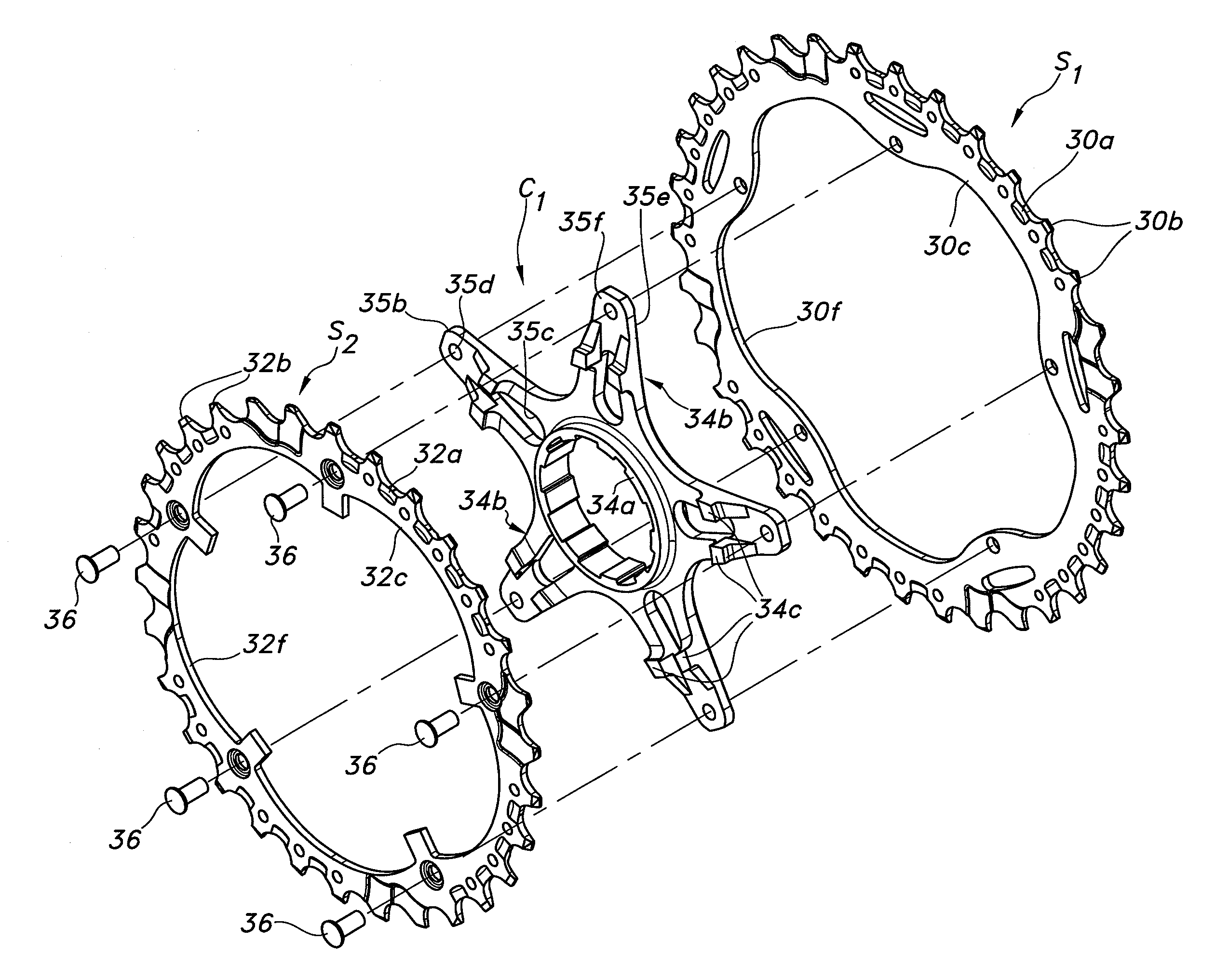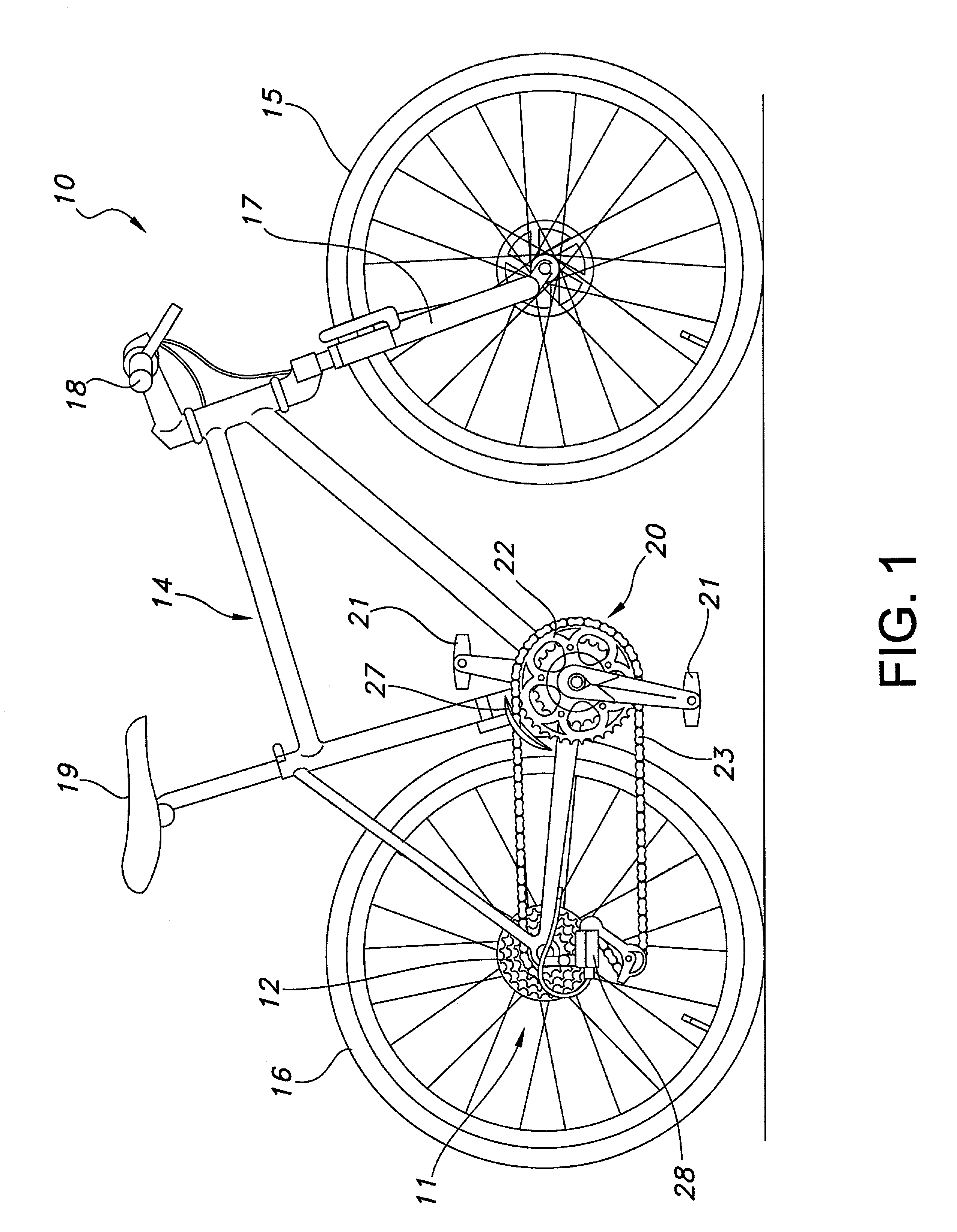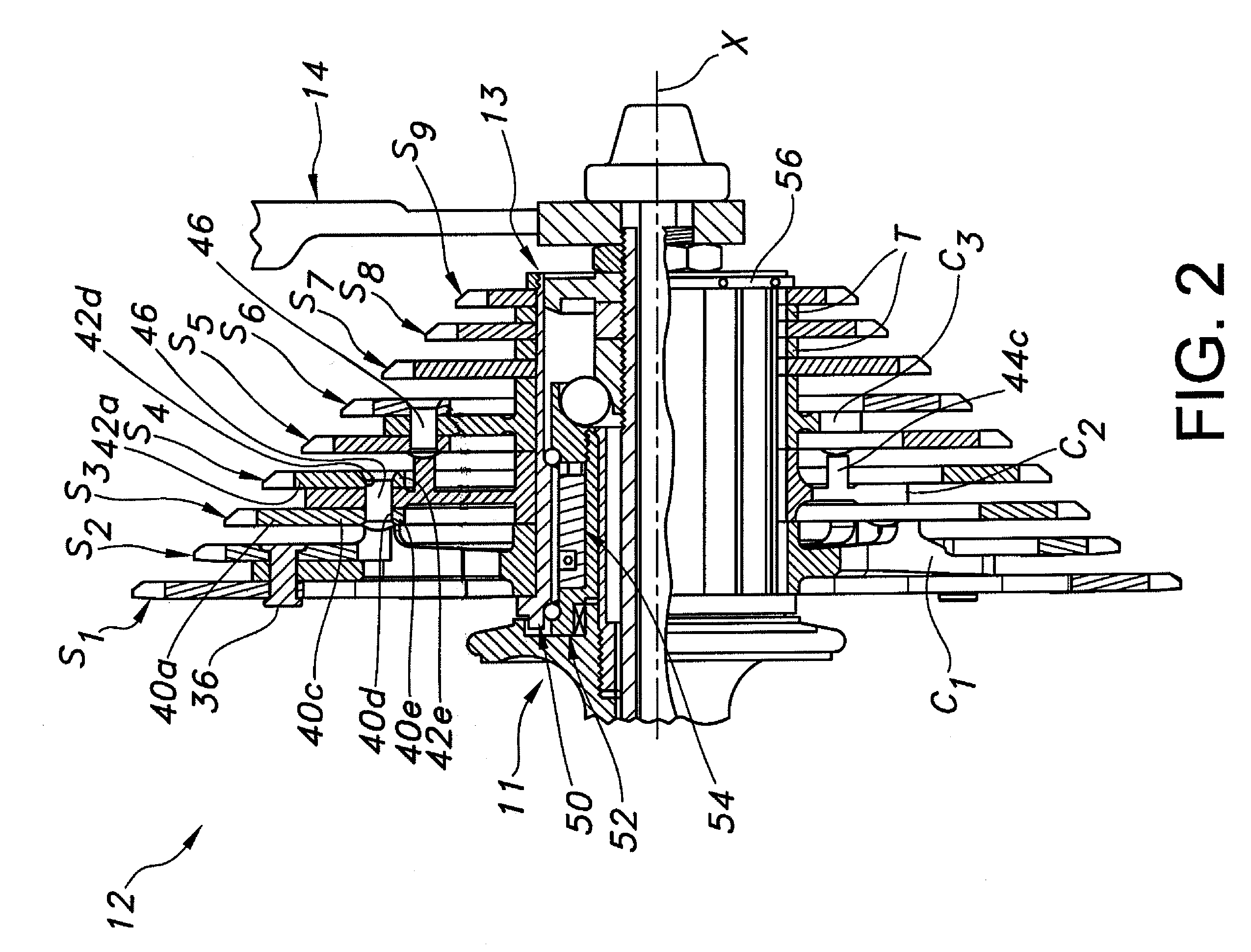Bicycle rear sprocket assembly
a rear derailleur and bicycle technology, applied in mechanical equipment, transportation and packaging, transportation equipment, etc., can solve the problems of sprocket deflection towards the adjacent sprocket, affecting the shifting performance of the rear derailleur, and increasing the weight of the bicycle, so as to resist the deflection of the sprock
- Summary
- Abstract
- Description
- Claims
- Application Information
AI Technical Summary
Benefits of technology
Problems solved by technology
Method used
Image
Examples
Embodiment Construction
[0041]Selected embodiments of the present invention will now be explained with reference to the drawings. It will be apparent to those skilled in the art from this disclosure that the following descriptions of the embodiments of the present invention are provided for illustration only and not for the purpose of limiting the invention as defined by the appended claims and their equivalents.
[0042]Referring initially to FIGS. 1 and 2, a conventional bicycle 10 is illustrated having a rear bicycle hub 11 with a rear multi-stage sprocket assembly 12 mounted on a freewheel 13 in accordance with the present invention. The bicycle 10 basically has a frame 14 with front and rear wheels 15 and 16 rotatably coupled thereto. A front fork 17 is coupled between the frame 14 and the front wheel 15 in a conventional manner. Turning a handlebar 18, which is fixedly coupled to the front fork 17, turns the front wheel 15. The rear wheel 16 is rotatably coupled to a rear portion of the frame 14 via the...
PUM
 Login to View More
Login to View More Abstract
Description
Claims
Application Information
 Login to View More
Login to View More - R&D
- Intellectual Property
- Life Sciences
- Materials
- Tech Scout
- Unparalleled Data Quality
- Higher Quality Content
- 60% Fewer Hallucinations
Browse by: Latest US Patents, China's latest patents, Technical Efficacy Thesaurus, Application Domain, Technology Topic, Popular Technical Reports.
© 2025 PatSnap. All rights reserved.Legal|Privacy policy|Modern Slavery Act Transparency Statement|Sitemap|About US| Contact US: help@patsnap.com



